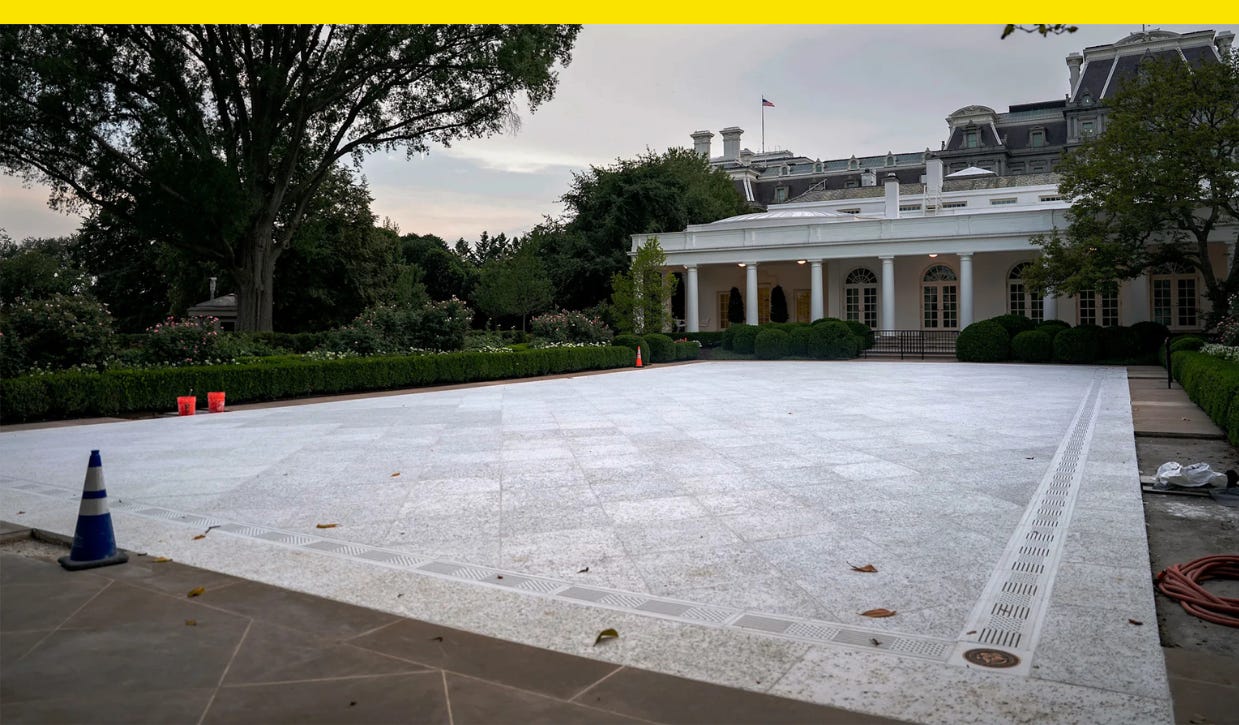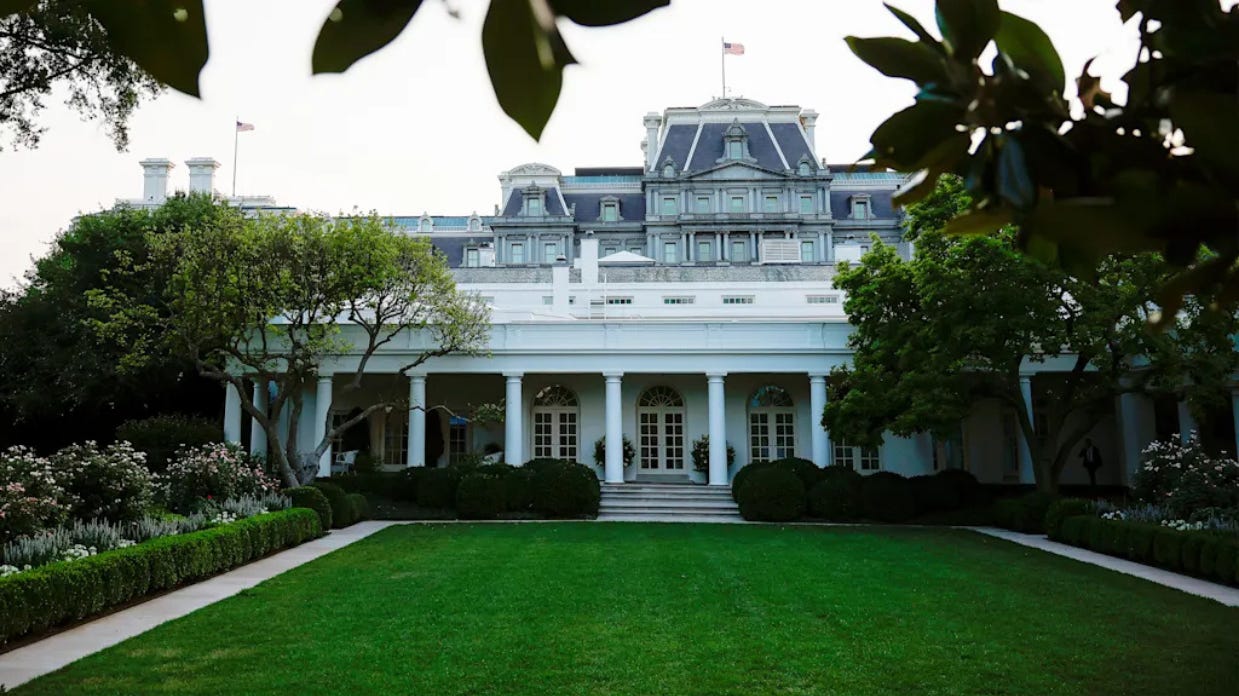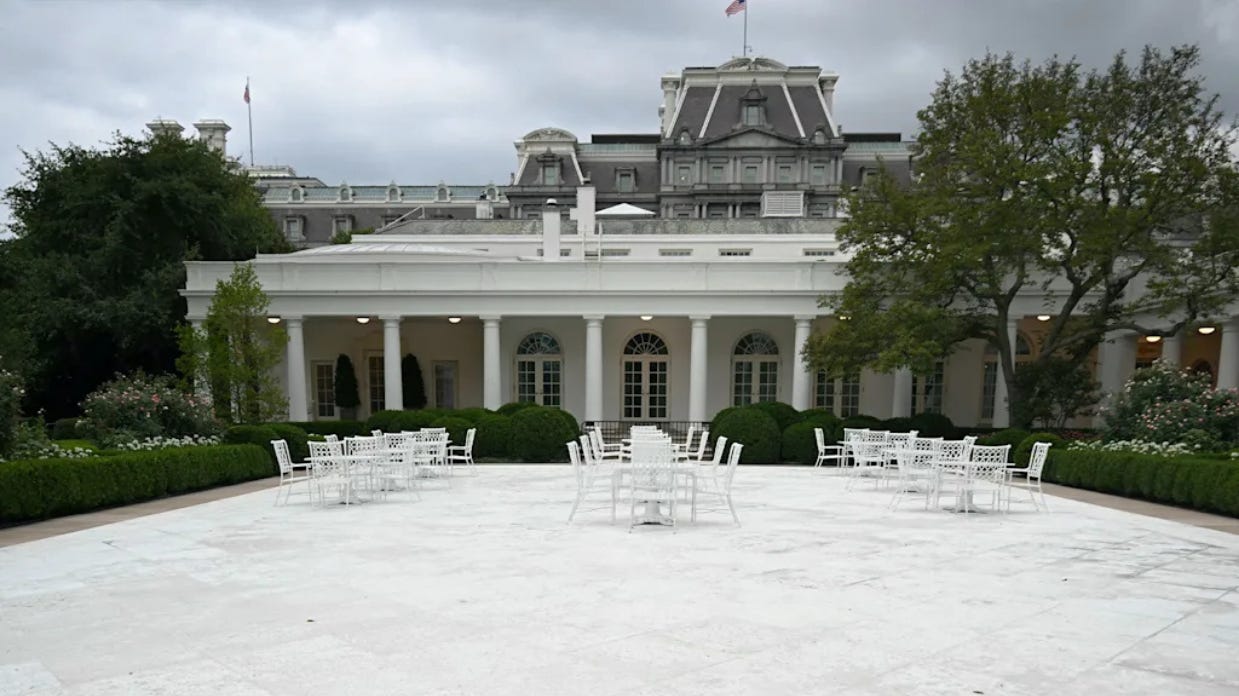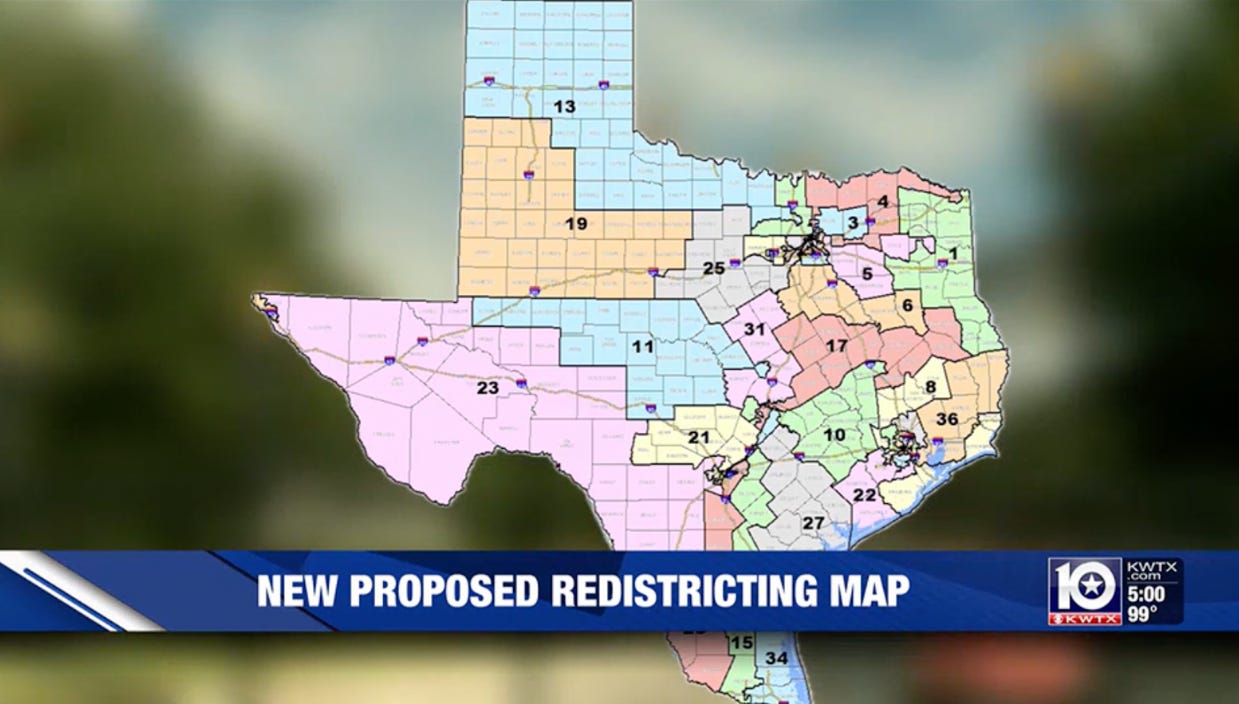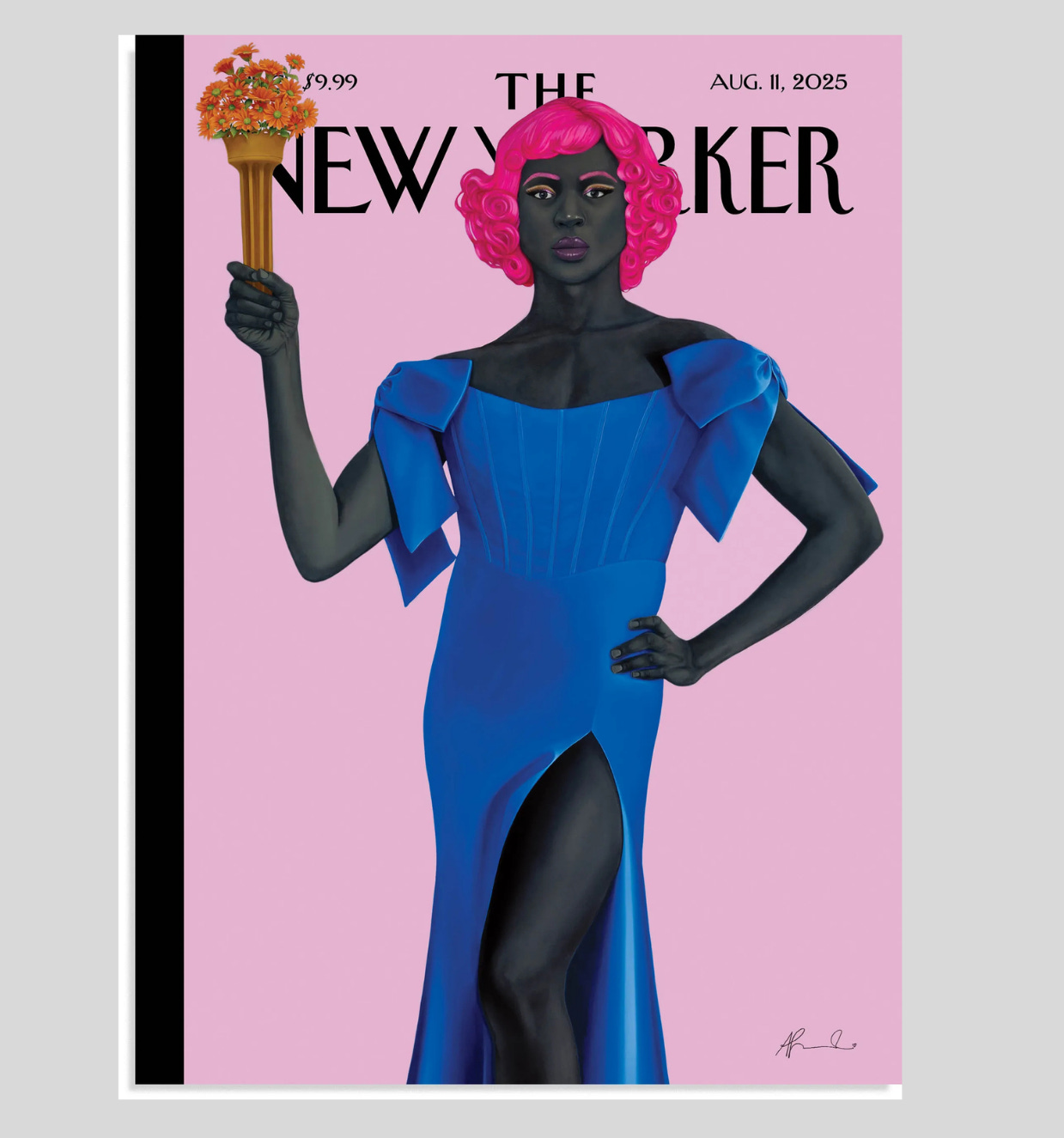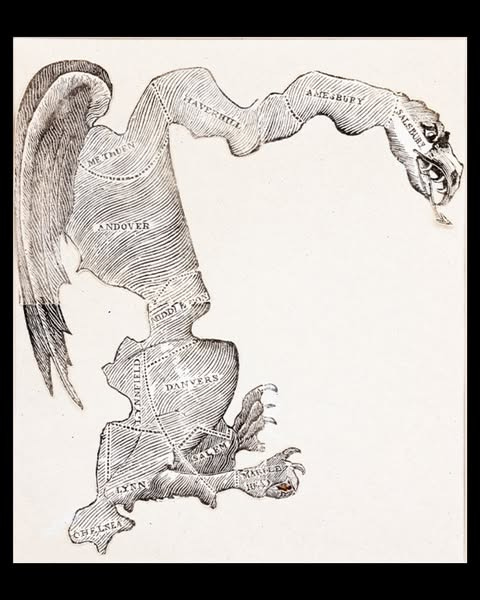What Trump’s redesigned Rose Garden says says about his White House plans
Plus: Trump could change the way we design representation in Congress
What Trump’s redesigned Rose Garden says says about his White House plans
With the White House Rose Garden grass ripped out and replaced with a brand-new stone patio, the Mar-a-Lago-ification of the White House has reached a new phase.
After returning to office for a second term, President Donald Trump quickly took to updating White House interiors to better match his maximalist, rococo aesthetic with elements like gold embellishment in the Oval Office and more pictures of himself lining the hallways.
Now, the new Rose Garden patio and other recent and planned outdoor updates represent more permanent updates to the most historically significant home in the United States. Trump isn’t just redecorating, he’s working to leave his physical mark on the property, and the Rose Garden is just the beginning.
Designed during John F. Kennedy’s administration by gardener Rachel Mellon, the Rose Garden has hosted presidential press conferences and the 1971 wedding of Richard Nixon’s daughter Tricia.
According to Trump, though, the space was unusable after it rained. “We had to do it,” Trump told reporters Sunday. “When we had a press conference, you’d sink into the mud.”
The new patio just so happens to resemble the patio at Mar-a-Lago, where he holds court. The National Park Service oversaw the Rose Garden’s redesign, and it was paid for by the Trust for the National Mall, a nonpartisan nonprofit.
Work began on the patio on June 11, and one week later, Trump had two jumbo car-dealership-size flagpoles installed on the White House’s North and South lawns. Now that the patio’s done, Trump is turning his attention to his next project: a planned $200 million ballroom inside the White House. The White House said construction begins next month on the 90,000-square-foot ballroom, which resembles Mar-a-Lago in renderings. Preservationists are worried.
On his first day in office, Trump signed an executive order promoting traditional, classic federal civic architecture, but at home, he’s following his own rules. This isn’t a revival of classical architecture as much as it is an attempt to bring the style of South Florida to D.C. Redesigning the landscape was just the first step. No matter how far Trump’s White House renovations end up going, one thing’s for certain: The office won’t look the same after he’s done with it.
Previously in Yello:
Trump could change the way we design representation in Congress

After years of improvements, the trend towards nonpartisan redistricting in the U.S. is on the verge of backsliding. President Donald Trump’s push for Texas lawmakers to redraw their state’s districts to give Republicans more safe U.S. House seats ahead of next year’s midterms has inspired some Democrats to now call for fighting fire with fire. It’s revenge of the Gerry-mander.
Like the Democratic donkey, Republican elephant, and Santa Claus, the term “gerrymandering” was the creation of a 19th century cartoon. Boston engraver Elkanah Tisdale created the original 1812 “Gerry-mander” cartoon that depicted a redrawn election map in Massachusetts under then-Gov. Elbridge Gerry as a dragon. It snaked around to represent an oddly drawn election district designed for the benefit of a politician, and more than 200 years later, the meme’s resonance remains. It’s inspired a font made from gerrymandered district maps in 2019 called Ugly Gerry, and Unfair Share, a $15 hard-to-snap gerrymandered candy bar.
In recent years, though, some states have made efforts to tame gerrymandering by depoliticizing their redistricting process. The number of states that draw their districts through a commission doubled from five to 10 between 2011 and 2021, according to data from the nonprofit American Redistricting Project, while Princeton’s most recent Gerrymandering Report Card gave 27 states an A or B rating, compared to just 15 with a D or F.
Now that progress could be at risk following Trump’s open call for Texas to make a more suitable map for Republicans. Democrats aren’t standing for it, including Texas state lawmakers who fled to deny the legislature a quorum, and the party’s statehouse arm, the Democratic Legislative Campaign Committee, or DLCC, which wants state Democrats to fight back.
“All options must be on the table — including Democratic state legislatures using their power to fight back and pursue redistricting mid-cycle in order to protect our democracy,” DLCC president Heather Williams said in a statement Monday.
Already in California, where voters approved redistricting by commission in 2008, Democrats are confident they could marshal a campaign to net their party five new seats or more, and a pollster for Gov. Gavin Newsom found a slim majority of California voters support overturning their state’s commission should Texas Republicans end up drawing new boundaries more favorable to them, according to Politico.
If Texas and California follow through, other states where partisans might be able to redraw their boundaries could be next in a tit-for-tat. The knock against gerrymandering is it lets politicians pick their voters and not the other way around. If Trump has his way, parties could just pick both.
Have you seen this?
Some swing district Republicans object to Texas redistricting plan as Democrats threaten to retaliate. Two GOP lawmakers say they'll offer bills to curtail gerrymandering. They could be in the line of fire if Democrats in states like California and New York respond in kind to the Texas push. [NBC News]
Amy Herald’s “Trans Forming Liberty” that was going to be removed from her Smithsonian exhibition before she cancelled is now on the cover of the New Yorker. “‘Trans Forming Liberty’ challenges who we allow to embody our national symbols—and who we erase,” Sherald said. “It demands a fuller vision of freedom, one that includes the dignity of all bodies, all identities. Liberty isn’t fixed. She transforms, and so must we. This portrait is a confrontation with that truth.” [New Yorker]
Trump has the hots for Sydney's ad. Trump fired the head of the Bureau of Labor Statistics, or BLS, but he’d rather talk about Sydney Sweeney after BuzzFeed reported she’s Republican. Plus: Dua Lipa has triple citizenship now. [Whig]
History of political design
The original "Gerry-mander" cartoon (1812) by Elkanah Tisdale. The cartoon was published in the Boston Gazette and criticized new election maps under then-Massachusetts Gov. Elbridge Gerry, from which the term "gerrymandering" gets its name. Gerry lost reelection, but his gerrymandering in the state was successful, as his party gained seats in the legislature, according to the Library of Congress.
A portion of this newsletter was first published in Fast Company.
Like what you see? Subscribe for more:


